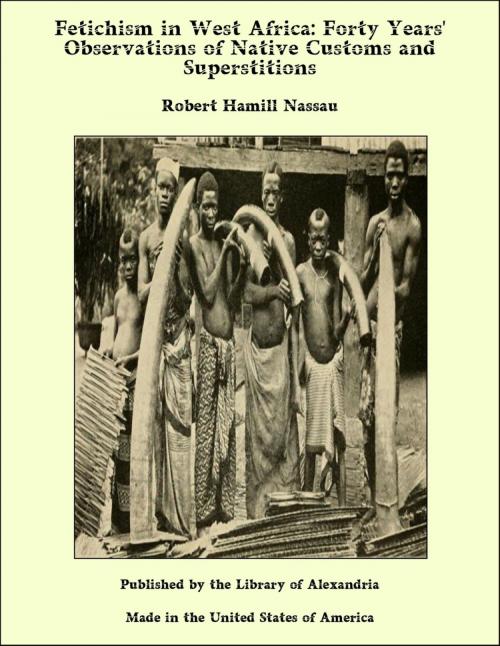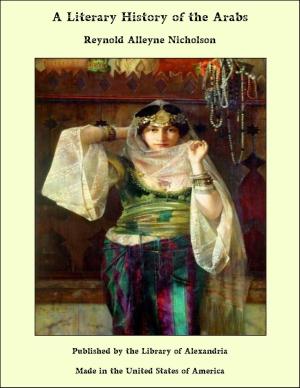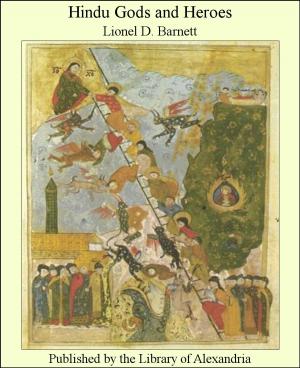Fetichism in West Africa: Forty Years' Observations of Native Customs and Superstitions
Nonfiction, Religion & Spirituality, New Age, History, Fiction & Literature| Author: | Robert Hamill Nassau | ISBN: | 9781465511638 |
| Publisher: | Library of Alexandria | Publication: | March 8, 2015 |
| Imprint: | Language: | English |
| Author: | Robert Hamill Nassau |
| ISBN: | 9781465511638 |
| Publisher: | Library of Alexandria |
| Publication: | March 8, 2015 |
| Imprint: | |
| Language: | English |
That stream of the Negro race which is known ethnologically as “Bantu,” occupies all of the southern portion of the African continent below the fourth degree of north latitude. It is divided into a multitude of tribes, each with its own peculiar dialect. All these dialects are cognate in their grammar. Some of them vary only slightly in their vocabulary. In others the vocabulary is so distinctly different that it is not understood by tribes only one hundred miles apart, while that of others a thousand miles away may be intelligible. In their migrations the tribes have been like a river, with its windings, currents swift or slow; there have been even, in places, back currents; and elsewhere quiet, almost stagnant pools. But they all—from the Divala at Kamerun on the West Coast across to the Kiswahile at Zanzibar on the East, and from Buganda by the Victoria Nyanza at the north down to Zulu in the south at the Cape—have a uniformity in language, tribal organization, family customs, judicial rules and regulations, marriage ceremonies, funeral rites, and religious beliefs and practice. Dissimilarities have crept in with mixture among themselves by intermarriage, the example of foreigners, with some forms of foreign civilization and education, degradation by foreign vice, elevation by Christianity, and compulsion by foreign governments. As a description of Bantu sociology, I give the following outline which was offered some years ago, in reply to inquiries sent to members of the Gabun and Corisco Mission living at Batanga, by the German Government, in its laudable effort to adapt, as far as consistent with justice and humanity, its Kamerun territorial government to the then existing tribal regulations and customs of the tribes living in the Batanga region. This information was obtained by various persons from several sources, but especially from prominent native chiefs, all of them men of intelligence. In their general features these statements were largely true also for all the other tribes in the Equatorial Coast region, and for most of the interior Bantu tribes now pressing down to the Coast. They were more distinctly descriptive of Batanga and the entire interior at the time of their formulation. But in the ten years that have since passed, a stranger would find that some of them are no longer exact. Foreign authority has removed or changed or sapped the foundations of many native customs and regulations, while it has not fully brought in the civilization of Christianity. The result in some places, in this period of transition, has been almost anarchy,—making a despotism, as under Belgian misrule in the so-called Kongo “Free” State; or commercial ruin, as under French monopoly in their Kongo-Français; and general confusion, under German hands, due to the arbitrary acts of local officials and their brutal black soldiery.
That stream of the Negro race which is known ethnologically as “Bantu,” occupies all of the southern portion of the African continent below the fourth degree of north latitude. It is divided into a multitude of tribes, each with its own peculiar dialect. All these dialects are cognate in their grammar. Some of them vary only slightly in their vocabulary. In others the vocabulary is so distinctly different that it is not understood by tribes only one hundred miles apart, while that of others a thousand miles away may be intelligible. In their migrations the tribes have been like a river, with its windings, currents swift or slow; there have been even, in places, back currents; and elsewhere quiet, almost stagnant pools. But they all—from the Divala at Kamerun on the West Coast across to the Kiswahile at Zanzibar on the East, and from Buganda by the Victoria Nyanza at the north down to Zulu in the south at the Cape—have a uniformity in language, tribal organization, family customs, judicial rules and regulations, marriage ceremonies, funeral rites, and religious beliefs and practice. Dissimilarities have crept in with mixture among themselves by intermarriage, the example of foreigners, with some forms of foreign civilization and education, degradation by foreign vice, elevation by Christianity, and compulsion by foreign governments. As a description of Bantu sociology, I give the following outline which was offered some years ago, in reply to inquiries sent to members of the Gabun and Corisco Mission living at Batanga, by the German Government, in its laudable effort to adapt, as far as consistent with justice and humanity, its Kamerun territorial government to the then existing tribal regulations and customs of the tribes living in the Batanga region. This information was obtained by various persons from several sources, but especially from prominent native chiefs, all of them men of intelligence. In their general features these statements were largely true also for all the other tribes in the Equatorial Coast region, and for most of the interior Bantu tribes now pressing down to the Coast. They were more distinctly descriptive of Batanga and the entire interior at the time of their formulation. But in the ten years that have since passed, a stranger would find that some of them are no longer exact. Foreign authority has removed or changed or sapped the foundations of many native customs and regulations, while it has not fully brought in the civilization of Christianity. The result in some places, in this period of transition, has been almost anarchy,—making a despotism, as under Belgian misrule in the so-called Kongo “Free” State; or commercial ruin, as under French monopoly in their Kongo-Français; and general confusion, under German hands, due to the arbitrary acts of local officials and their brutal black soldiery.















